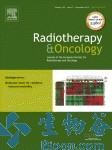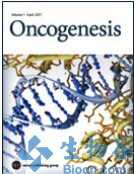西红柿和黄豆可防前列腺癌
2013-05-17 佚名 北京青年报
一项对老鼠进行的实验发现,同时吃西红柿、黄豆食品,比单吃这两种食物更能防前列腺癌。 发表于最近出版的《癌症预防研究》期刊上的这项研究称,这项实验是用基因工程让老鼠很容易出现侵袭性前列腺癌。结果发现,食用西红柿与黄豆的老鼠中,有一半老鼠到实验结束都没有出现癌症病变。与此相比,没有吃黄豆制品,也没有吃西红柿的老鼠最后全部患了前列腺癌。 这些实验鼠从4周大到18周大不等,美国伊利诺伊大学
一项对老鼠进行的实验发现,同时吃西红柿、黄豆食品,比单吃这两种食物更能防前列腺癌。
发表于最近出版的《癌症预防研究》期刊上的这项研究称,这项实验是用基因工程让老鼠很容易出现侵袭性前列腺癌。结果发现,食用西红柿与黄豆的老鼠中,有一半老鼠到实验结束都没有出现癌症病变。与此相比,没有吃黄豆制品,也没有吃西红柿的老鼠最后全部患了前列腺癌。
这些实验鼠从4周大到18周大不等,美国伊利诺伊大学的研究人员把它们分成四组:第一组喂食10%的西红柿粉;第二组喂食2%的黄豆芽;第三组喂食西红柿粉与黄豆芽;第四组老鼠既没有吃西红柿粉,也没吃黄豆芽。
实验结果显示,无论是单吃西红柿、黄豆食品,还是两种食物一起吃,都能明显降低前列腺癌的发生率。不过,两种食物一起吃效果最好,其中只有45%的老鼠出现前列腺癌。至于单吃西红柿的老鼠,出现前列腺癌的比率为61%。如果老鼠单吃黄豆食品,患癌比率为66%。
研究还发现,那些经常食用黄豆食品国家的男人,其前列腺癌的发生率往往都较低。
研究人员建议,对55岁以上的男性来说,每周最好食用三四份西红柿食品,且每天食用一两份黄豆制品,也许可防前列腺癌。
{{前列腺癌|6}}
Soy and tomato combination may help fight prostate cancer
Tomatoes and soy foods may be more effective in preventing prostate cancer when they are eaten together than when either is eaten alone, said a University of Illinois study.
“In our study, we used mice that were genetically engineered to develop an aggressive form of prostate cancer. Even so, half the animals that had consumed tomato and soy had no cancerous lesions in the prostate at study’s end. All the mice in the control group – no soy, no tomato – developed the disease,” said John Erdman, a U of I professor of food science and nutrition.
From the time they were four to 18 weeks old, the animals were fed one of four diets: (1) 10% whole tomato powder; (2) 2% soy germ; (3) tomato powder plus soy germ; and (4) a control group that ate neither tomato nor soy.
“Eating tomato, soy, and the combination all significantly reduced prostate cancer incidence. But the combination gave us the best results. Only 45% of mice fed both foods developed the disease compared to 61% in the tomato group, and 66% in the soy group,” he said.
Prostate cancer is the most frequently diagnosed cancer in men, but the disease has nearly a 100% survival rate if it’s caught early. In older men, it is often a slow-growing cancer, and these men often choose watchful waiting over radiation and surgical treatments that have unwelcome side effects, said Krystle Zuniga, co-author of the paper.
Soy isoflavone serum and prostate levels in the mice are similar to those found in Asian men who consume one to two servings of soy daily. In countries where soy is eaten regularly, prostate cancer occurs at significantly lower levels, Erdman noted.
How much soy and tomato should a 55-year-old man concerned about prostate health eat in order to receive these benefits?
“The results of the mouse study suggest that three to four servings of tomato productsper week and one to two servings of soy foods daily could protect against prostate cancer,” Zuniga said.
According to the scientists, these findings reinforce the recommendation that we should all eat a wide variety of whole fruits and vegetables.
“It’s better to eat a whole tomato than to take a lycopene supplement. It’s better to drink soy milk than to take soy isoflavones. When you eat whole foods, you expose yourself to the entire array of cancer-fighting, bioactive components in these foods,” Erdman said.
The researcher’s whole-food recommendation is bolstered by the way soy germ performed in this study. He noted that soy germ has a very different isoflavone profilethan the rest of the soybean.
“Of the isoflavones, genistein gets most of the attention. But soy germ is very high in the other isoflavones, daidzein and glycitein, and low in genistein,” he said.
It was interesting for the scientists to see that the soy product they used, although low in genistein, was still very effective at reducing cancer incidence.
本网站所有内容来源注明为“梅斯医学”或“MedSci原创”的文字、图片和音视频资料,版权均属于梅斯医学所有。非经授权,任何媒体、网站或个人不得转载,授权转载时须注明来源为“梅斯医学”。其它来源的文章系转载文章,或“梅斯号”自媒体发布的文章,仅系出于传递更多信息之目的,本站仅负责审核内容合规,其内容不代表本站立场,本站不负责内容的准确性和版权。如果存在侵权、或不希望被转载的媒体或个人可与我们联系,我们将立即进行删除处理。
在此留言










